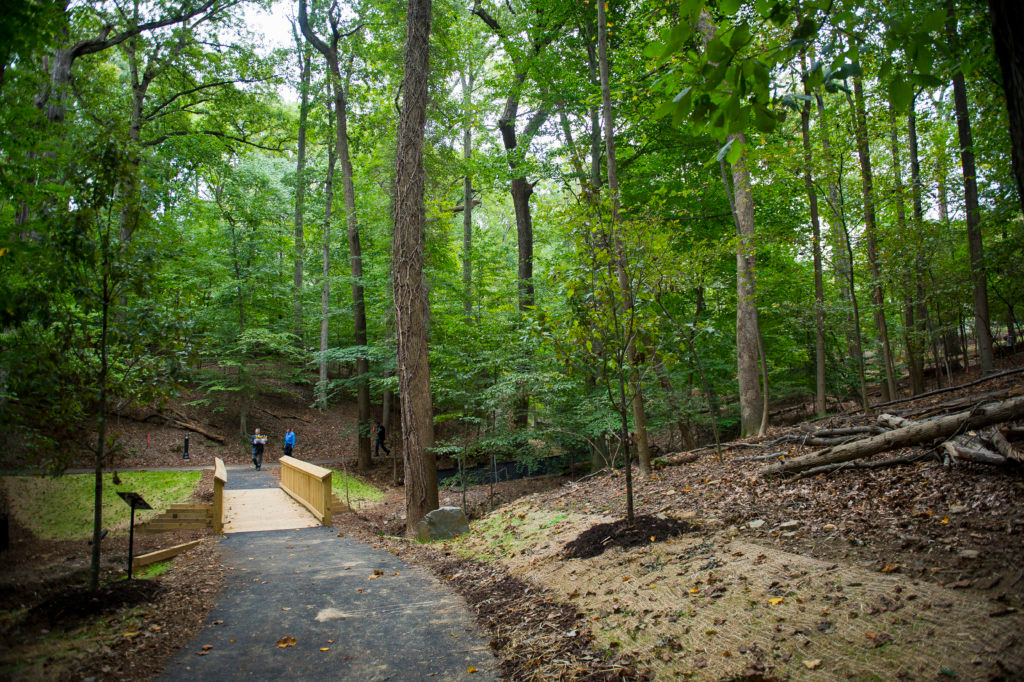The Remedy Outside Our Doors
Gardens and Nature Give Physical and Mental Benefits

The Thomas Fire ignited in Ventura County last December, burning approximately 281,893 acres and taking two lives before it was contained in January 2018. At that time, it was the largest wildfire in modern California history.
I was one of the 104,607 residents evacuated by the fire, which was fueled by climate-related drought and Santa Ana winds. It scoured the hillsides above my home, setting things up for deadlier events. I had just settled back in after the evacuation when heavy rains triggered flash flooding and catastrophic mud flows, taking 21 lives.
This chain of disasters hit at a time when I was grieving the recent losses of my husband and my job. I’m thankful to have an amazing support team of friends that held me steady, enabling me to find ways to be grateful for everything that went right, even as things were going incredibly wrong. It was a surreal time. Similar to the landscape of Montecito, I’m forever changed.
A year later many of us still feel the impacts. In fact, many people in general suffer the stresses of modern life, whether it’s climate-related disasters, politics, or any number of more personal things.
One remedy exists outside our doors. The physical and mental benefits of a connection to nature are considered to be a legitimate form of treatment, standing alongside or augmenting traditional therapies. Doctors in Scotland have recently begun to prescribe nature to their patients as a way to reduce stress. In Japan the longstanding practice of “forest bathing” has been found to lower heart rate and blood pressure, reduce stress hormone production, boost the immune system, and improve overall well-being.
Case in point — a staggering 40 percent of soldiers who returned from active duty in Iraq and Afghanistan experience post-traumatic stress disorder, sometimes severe enough to end in suicide. At Walter Reed National Military Medical Center, a forested piece of land was developed into a healing space called Green Road. The results have proven to be inspiring. Veterans say they find themselves reconnecting to life again as a result of time spent in the healing power of nature.
William Shakespeare wrote, “One touch of nature makes the whole world kin.” As a landscape architect, I’m well aware of the power of nature to heal and inspire. Nature helps us to remember that we’re part of something greater. It enables us to shift our focus from head to heart. It promotes feelings of wholeness while stimulating our imagination and offering a greater sense of clarity.
For me, the events of the past year have culminated in a deep desire to create gardens as places of refuge and healing — gardens made for times like these when so many things seem uncertain and beyond our control. In these gardens, elements such as light, color, texture, placement, and context play out in unique ways. Sacred geometry, metaphor, symbolism, and myth expand and strengthen them. My hope is that the meaning and spirit of these gardens ripple out into the local community as a gesture of joy, peace and healing.
Joseph Campbell stated, “Our life has become so economic and practical in its orientation that … you hardly know where the hell you are or what it is you intended. You are always doing something that is required of you. Where is your bliss … ?” Whatever our bliss is, we must find it in order to remain whole. Nature can help us see the connection we have with all things and our role as caretakers of the planet. Disasters may be the way of the future. Places of refuge can offer a salve to heal, recharge, and build resilience, helping us better navigate whatever life throws our way.



